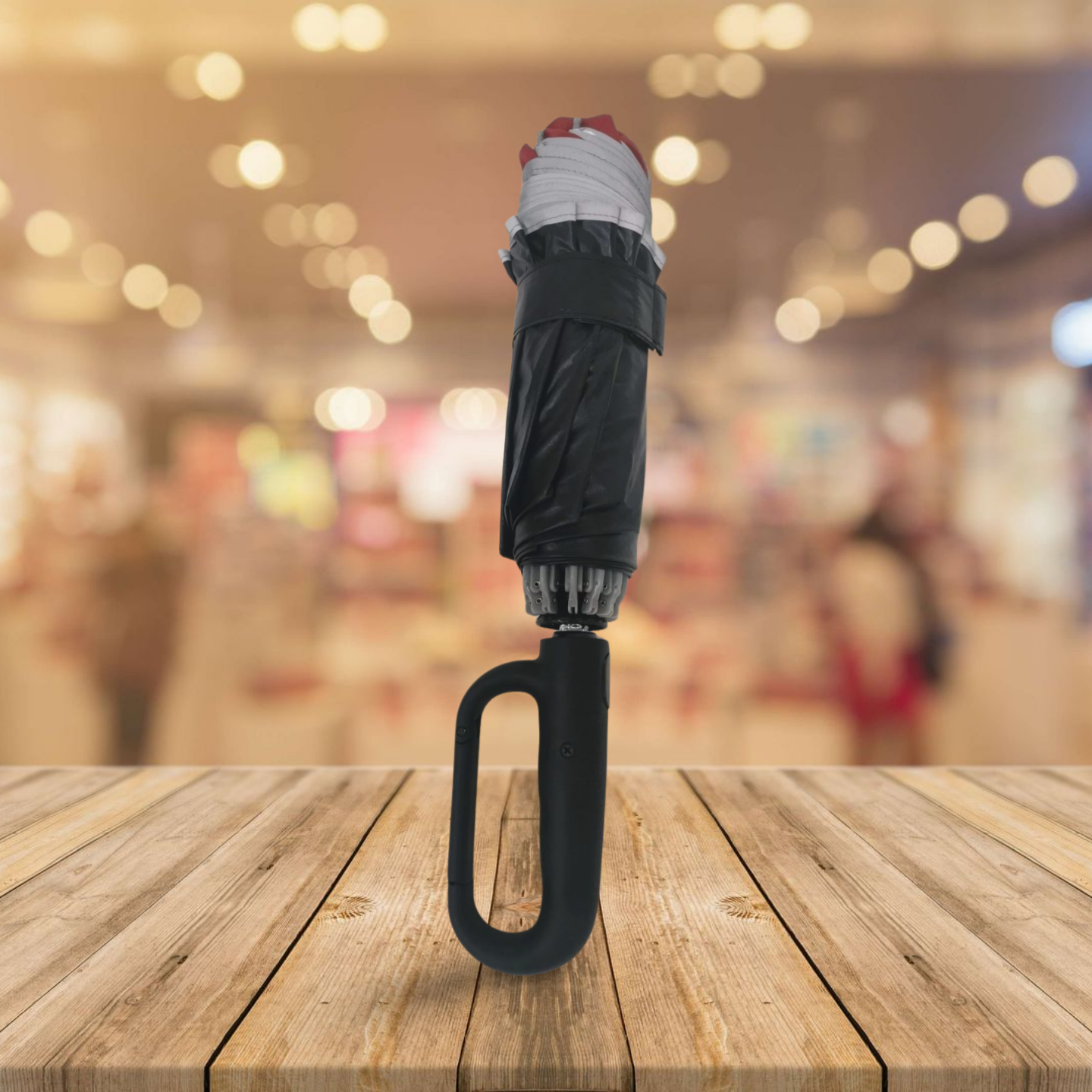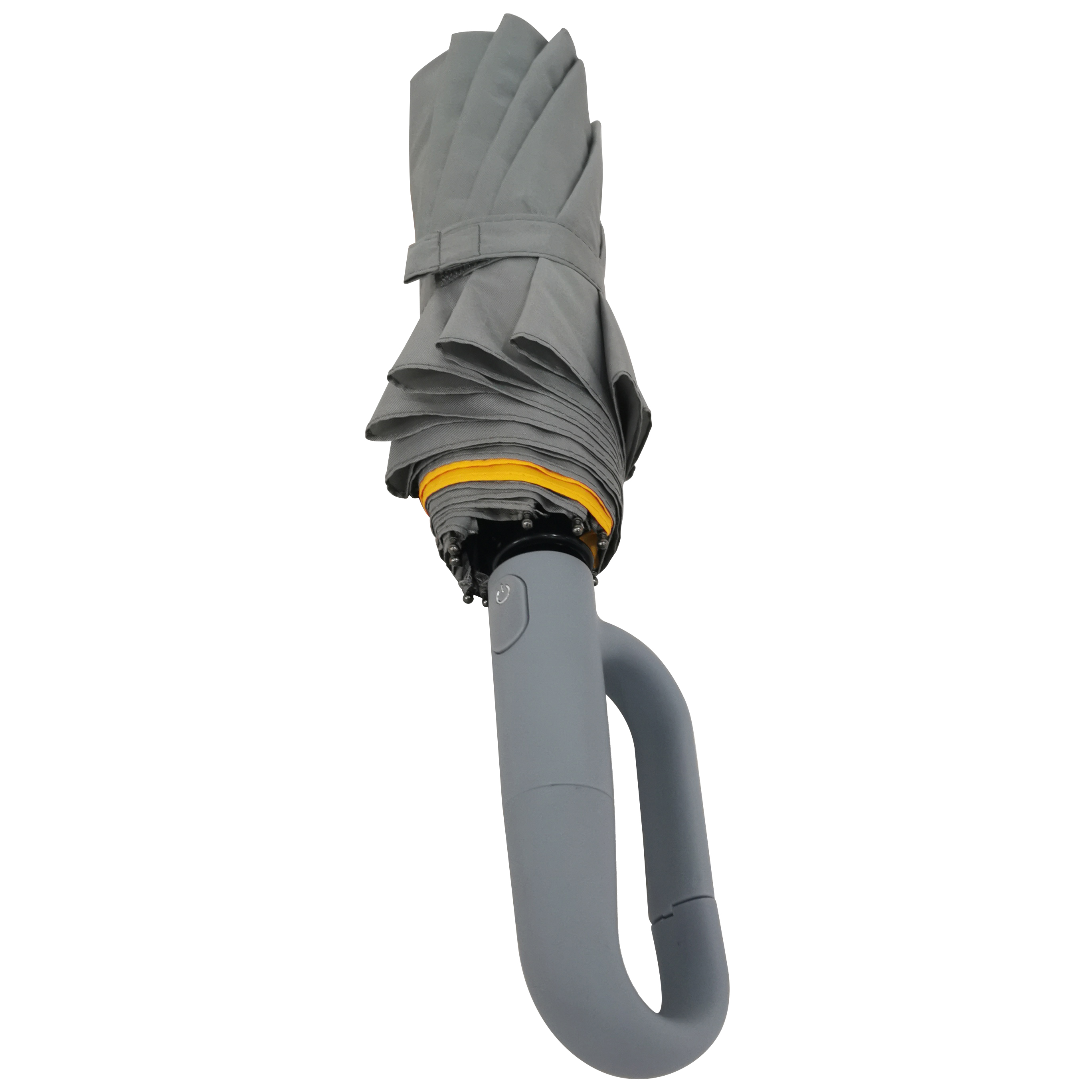Are Reverse Folding Umbrellas Worth the Hype? A Practical Review
Reverse umbrella with hook handle Regular umbrella with hook handle


Rainy days call for reliable protection, and umbrellas are a must-have. Among the many options available, reverse folding umbrellas have become increasingly popular. But do they live up to their reputation? Let’s take a closer look at how they perform in real-life situations, how they compare to regular umbrellas, and whether they’re right for you.
Regular three fold umbrella Reverse/ Inverted three fold umbrella


Understanding Reverse Folding Umbrellas
Unlike standard umbrellas that fold downward with the wet side exposed, reverse folding umbrellas (sometimes called inverted umbrellas) close inside out. This clever design keeps rainwater contained, preventing drips when you close it.
What Makes Them Different:
- Unique closing mechanism – The wet surface folds inward, keeping water from spilling
- Stronger build – Many models feature reinforced frames for better durability
- Space-saving – Often designed to be compact for easy carrying
- Convenient operation – Some versions include automatic open/close buttons
Straight reverse umbrella (manual open) Straight reverse umbrella (automatic open)


Why People Love These Umbrellas
1. No More Water Mess
The biggest advantage is obvious – no more puddles when you close your umbrella. This makes them perfect for:
- Getting in and out of cars
- Entering buildings or public spaces
- Storing in bags without worrying about wet items
2. Better in Windy Conditions
Through personal testing, I’ve found many reverse umbrellas handle gusts better than traditional ones. Features like double canopies or flexible joints help them withstand strong winds without turning inside out.
3. More Convenient to Use
The automatic open/close function (available on many models) is a game-changer when you’re carrying bags or need quick protection from sudden downpours.
4. Easier to Store Wet
Since the wet part folds inside, you can tuck it away in a tight space without making everything else damp – a real advantage in crowded buses or small offices.
Things to Consider Before Buying
1. Higher Price Point
You’ll typically pay more for these umbrellas. From my experience, the extra cost is often justified by longer lifespan and better functionality, but it depends on how often you use it.
2. Size and Weight
While many are compact, some models feel slightly heavier than traditional umbrellas when folded. If ultra-lightweight is your priority, compare specs carefully.
3. Different Handling
It might feel strange at first if you’re used to regular umbrellas. After a few uses, most people adjust to the different closing motion.
How They Stack Up Against Regular Umbrellas
Here’s a quick comparison based on practical use:
Water Control:
- Reverse: Contains water when closing
- Traditional: Drips everywhere
Wind Performance:
- Reverse: Generally more stable
- Traditional: More likely to flip
Ease of Use:
- Reverse: Often one-handed operation
- Traditional: Usually requires two hands
Portability:
- Reverse: Some bulkier options
- Traditional: More ultra-compact choices
Price:
- Reverse: Higher initial cost
- Traditional: More budget-friendly
Who Would Benefit Most?
These umbrellas shine for:
- Daily commuters – Especially those using public transportation
- Professionals – Keeps office entrances dry
- Frequent travelers – Compact versions fit well in luggage
- People in windy areas – Better resistance to strong gusts
The Bottom Line
After testing several models through different weather conditions, I can confidently say reverse folding umbrellas are worth considering if you:
- Hate dealing with dripping umbrellas
- Need something that lasts longer than cheap models
- Want easier handling in crowded spaces
While they cost more initially, the convenience and durability often make up for the higher price over time.
Have you used a reverse folding umbrella? I’d love to hear about your experience in the comments – what worked or didn’t work for you?
Post time: May-20-2025

